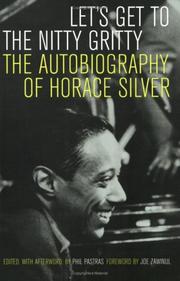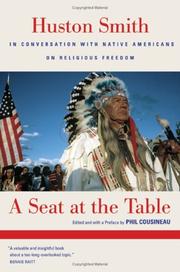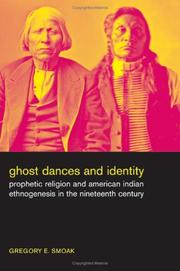| Listing 1 - 8 of 8 |
Sort by
|

ISBN: 1403972281 1349533564 9786611369866 1281369861 1403983240 Year: 2006 Publisher: New York : Palgrave Macmillan,
Abstract | Keywords | Export | Availability | Bookmark
 Loading...
Loading...Choose an application
- Reference Manager
- EndNote
- RefWorks (Direct export to RefWorks)
A dense web of private associations drawn from multiple social classes, interest groups and value communities makes for a firm foundation for strong democracy. In Latin America today, will civil society improve the quality of democracy or will it foster political polarization and reverse recent progress? Distinguished theorists from the United States, Canada and Latin America explore the diverse impact of civil society on economic performance, political parties, and state institutions. In-depth and up-to-date country studies explore the consequences of civil society for the durability of democracy in three highly dynamic, controversial settings: Argentina, Brazil and Venezuela.
Civil society --- Democracy --- Société civile --- Démocratie --- Latin America --- Amérique latine --- Politics and government --- Politique et gouvernement --- Société civile --- Démocratie --- Amérique latine --- Ethnology --- Diplomacy. --- International relations. --- Democracy. --- Latin American Politics. --- Latin American Culture. --- International Relations. --- Politics and gover.

ISBN: 1282360442 9786612360442 052094142X 1598759299 9780520941427 1423752651 9781423752653 9780520253926 0520253922 9781598759297 9780520243743 0520243749 9781282360440 6612360445 Year: 2006 Publisher: Berkeley, Calif. University of California Press
Abstract | Keywords | Export | Availability | Bookmark
 Loading...
Loading...Choose an application
- Reference Manager
- EndNote
- RefWorks (Direct export to RefWorks)
Horace Silver is one of the last giants remaining from the incredible flowering and creative extension of bebop music that became known as "hard bop" in the 1950's. This freewheeling autobiography of the great composer, pianist, and bandleader takes us from his childhood in Norwalk, Connecticut, through his rise to fame as a musician in New York, to his comfortable life "after the road" in California. During that time, Silver composed an impressive repertoire of tunes that have become standards and recorded a number of classic albums. Well-seasoned with anecdotes about the music, the musicians, and the milieu in which he worked and prospered, Silver's narrative-like his music-is earthy, vernacular, and intimate. His stories resonate with lessons learned from hearing and playing alongside such legends as Art Blakey, Charlie Parker, and Lester Young. His irrepressible sense of humor combined with his distinctive spirituality make his account both entertaining and inspiring. Most importantly, Silver's unique take on the music and the people who play it opens a window onto the creative process of jazz and the social and cultural worlds in which it flourishes. Let's Get to the Nitty Gritty also describes Silver's spiritual awakening in the late 1970's. This transformation found its expression in the electronic and vocal music of the three-part work called The United States of Mind and eventually led the musician to start his own record label, Silveto. Silver details the economic forces that eventually persuaded him to put Silveto to rest and to return to the studios of major jazz recording labels like Columbia, Impulse, and Verve, where he continued expanding his catalogue of new compositions and recordings that are at least as impressive as his earlier work.
Pianists --- Jazz musicians --- Silver, Horace, --- 526 --- Monografieën componisten --- 20th century american culture. --- 20th century american music history. --- african american culture. --- african american music. --- american composer. --- american jazz pianist. --- american music history. --- art blakey. --- artists. --- autobiography. --- bandleader. --- bands. --- bebop. --- blues. --- bop music. --- charlie parker. --- entertainment. --- gospel music. --- hard bop. --- jazz music. --- jazz. --- lester young. --- music arranger. --- music. --- musicians. --- performing arts. --- record label. --- rhythm and blues. --- silverto. --- singers. --- spiritual awakening. --- spirituality. --- the united states of mind.

ISBN: 1282360329 9786612360329 0520940911 1598757989 9780520940918 1423731360 9781423731368 9781598757989 9780520244399 0520244397 9781282360327 Year: 2006 Publisher: Berkeley University of California Press
Abstract | Keywords | Export | Availability | Bookmark
 Loading...
Loading...Choose an application
- Reference Manager
- EndNote
- RefWorks (Direct export to RefWorks)
In this collection of illuminating conversations, renowned historian of world religions Huston Smith invites ten influential American Indian spiritual and political leaders to talk about their five-hundred-year struggle for religious freedom. Their intimate, impassioned dialogues yield profound insights into one of the most striking cases of tragic irony in history: the country that prides itself on religious freedom has resolutely denied those same rights to its own indigenous people. With remarkable erudition and curiosity-and respectfully framing his questions in light of the revelation that his discovery of Native American religion helped him round out his views of the world's religions-Smith skillfully helps reveal the depth of the speakers' knowledge and experience. American Indian leaders Vine Deloria, Jr. (Standing Rock Sioux), Winona LaDuke (Anishshinaabeg), Walter Echo-Hawk (Pawnee), Frank Dayish, Jr. (Navajo), Charlotte Black Elk (Oglala Lakota), Douglas George-Kanentiio (Mohawk-Iroquois), Lenny Foster (Dine/Navajo), Tonya Gonnella Frichner (Onondaga), Anthony Guy Lopez (Lakota-Sioux), and Oren Lyons (Onondaga) provide an impressive overview of the critical issues facing the Native American community today. Their ideas about spirituality, politics, relations with the U.S. government, their place in American society, and the continuing vitality of their communities give voice to a population that is all too often ignored in contemporary discourse. The culture they describe is not a relic of the past, nor a historical curiosity, but a living tradition that continues to shape Native American lives.
Indians of North America --- Freedom of religion --- Religion. --- Religion and mythology --- american government. --- american society. --- anishinaabeg. --- community. --- ecology. --- free exercise of religion. --- indigenous peoples. --- indigenous religion. --- iroquois. --- kinship. --- lakota. --- law. --- mohawk. --- native american culture. --- native american religions. --- native americans. --- native peoples. --- navajo. --- oglala lakota. --- onondaga. --- pawnee. --- politics. --- religion. --- religious ceremony. --- religious freedom. --- religious justice. --- sioux. --- spiritual law. --- spiritual. --- spirituality. --- standing rock sioux.

ISBN: 0520248120 Year: 2006 Volume: 15 Publisher: Berkeley, Calif. ; London : University of California Press,
Abstract | Keywords | Export | Availability | Bookmark
 Loading...
Loading...Choose an application
- Reference Manager
- EndNote
- RefWorks (Direct export to RefWorks)
Millennialism --- Conspiracies --- Human-alien encounters --- Millénarisme --- Conspiration --- Rencontres avec les extraterrestres --- conspiracy theory --- apocalyptic visions --- contemporary America --- cosmos --- the Bible --- internet alerts --- religion and politics --- American culture --- millennialism --- UFO's --- Armageddon --- scapegoating --- September 11 --- conspiracy theories --- conspiracies --- conspiracy belief --- New World Order (NWO) --- illuminati --- anti-semitism --- antisemitism --- David Icke --- conspiracism --- Protocols of the Elders of Zion --- Jim Keith (1949-1999) --- 11 September 20011
Book
ISBN: 1283651343 023037722X Year: 2006 Publisher: Houndmills, Basingstoke, Hampshire ; New York : Palgrave Macmillan,
Abstract | Keywords | Export | Availability | Bookmark
 Loading...
Loading...Choose an application
- Reference Manager
- EndNote
- RefWorks (Direct export to RefWorks)
Indigenous people constitute a large portion of Latin America's population and suffer from widespread poverty. This book provides the first rigorous assessment of changes in socio-economic conditions among the region's indigenous people, tracking progress in these indicators during the first international decade of indigenous peoples (1994-2004). Set within the context of existing literature and political changes over the course of the decade, this volume provides a rigorous statistical analysis of indigenous populations in Bolivia, Ecuador, Guatemala, Mexico and Peru, examining their poverty rates, education levels, income determinants, labour force participation and other social indicators. The results show that while improvements have been achieved in some social indicators, little progress has been made with respect to poverty.
Development economics. --- Regional economics. --- Spatial economics. --- Economic sociology. --- Ethnology --- Ethnicity. --- Social structure. --- Social inequality. --- Development Economics. --- Regional/Spatial Science. --- Organizational Studies, Economic Sociology. --- Latin American Culture. --- Ethnicity Studies. --- Social Structure, Social Inequality. --- Latin America --- Bolivia --- Ecuador --- Guatemala --- Mexico --- Peru --- Economic policy. --- Social policy. --- Equality. --- Indigenous peoples --- Economic development --- Economic conditions. --- Social conditions.

ISBN: 0520246268 9780520246263 9786612358913 0520932358 128235891X 1598759264 9780520932357 1423745523 9781423745525 9781598759266 9781282358911 6612358912 Year: 2006 Publisher: Berkeley (Cal.) University of California Press
Abstract | Keywords | Export | Availability | Bookmark
 Loading...
Loading...Choose an application
- Reference Manager
- EndNote
- RefWorks (Direct export to RefWorks)
While fads such as hula hoops or streaking are usually dismissed as silly enthusiasms, trends in institutions such as education, business, medicine, science, and criminal justice are often taken seriously, even though their popularity and usefulness is sometimes short-lived. Institutional fads such as open classrooms, quality circles, and multiple personality disorder are constantly making the rounds, promising astonishing new developments-novel ways of teaching reading or arithmetic, better methods of managing businesses, or improved treatments for disease. Some of these trends prove to be lasting innovations, but others-after absorbing extraordinary amounts of time and money-are abandoned and forgotten, soon to be replaced by other new schemes. In this pithy, intriguing, and often humorous book, Joel Best-author of the acclaimed Damned Lies and Statistics-explores the range of institutional fads, analyzes the features of our culture that foster them, and identifies the major stages of the fad cycle-emerging, surging, and purging. Deconstructing the ways that this system plays into our notions of reinvention, progress, and perfectibility, Flavors of the Month examines the causes and consequences of fads and suggests ways of fad-proofing our institutions.
Diffusion of innovations. --- Fads --- Social institutions. --- Social aspects. --- Innovations, Diffusion of --- Acculturation --- Communication --- Culture diffusion --- Technological innovations --- Crazes --- Fashion (Fad) --- Manners and customs --- Popular culture --- Institutions, Social --- Social systems --- Sociology --- Social structure --- Marketingstrategieën --- Marketing --- Trends --- Psychologie van de consument --- Onderzoek --- Marketingresearch --- Marketingstrategie --- Trend --- Consumentenpsychologie --- Financiewezen --- Ontwikkeling --- Leerlijn --- Marktonderzoek --- academia trends. --- american culture. --- anthropology. --- business management. --- business. --- creative thinking. --- creativity. --- criminal justice. --- critical thinking. --- decision making. --- emerging fads. --- fad cycle. --- fads. --- healthcare. --- innovation. --- institutional fads. --- media. --- medicine. --- new ideas. --- nonfiction. --- open classrooms. --- pedagogy fads. --- perfectibility. --- pop culture. --- popular culture. --- progress. --- psychology. --- purging. --- quality circles. --- reinvention. --- short term popularity. --- social criticism. --- social sciences. --- sociology. --- surging. --- trends.

ISBN: 0520241517 0520250354 9780520241510 9780520250352 9780520241510 9780520250352 9786611752552 0520940466 128175255X 0520904001 9780520940468 9781429467414 142946741X 9780520904002 9781281752550 Year: 2006 Publisher: Berkeley : University of California Press,
Abstract | Keywords | Export | Availability | Bookmark
 Loading...
Loading...Choose an application
- Reference Manager
- EndNote
- RefWorks (Direct export to RefWorks)
In this provocative and lively addition to his acclaimed writings on food, Warren Belasco takes a sweeping look at a little-explored yet timely topic: humanity's deep-rooted anxiety about the future of food. People have expressed their worries about the future of the food supply in myriad ways, and here Belasco explores a fascinating array of material ranging over two hundred years-from futuristic novels and films to world's fairs, Disney amusement parks, supermarket and restaurant architecture, organic farmers' markets, debates over genetic engineering, and more. Placing food issues in this deep historical context, he provides an innovative framework for understanding the future of food today-when new prophets warn us against complacency at the same time that new technologies offer promising solutions. But will our grandchildren's grandchildren enjoy the cornucopian bounty most of us take for granted? This first history of the future to put food at the center of the story provides an intriguing perspective on this question for anyone-from general readers to policy analysts, historians, and students of the future-who has wondered about the future of life's most basic requirement.
Food. --- Food supply. --- Food --- Food supply --- Diet & Clinical Nutrition --- Health & Biological Sciences --- History --- Social Sciences and Humanities. Development Studies --- History. --- Food Policy --- Food Policy. --- 651 Maatschappij. Algemeen --- voedsel --- Food control --- Produce trade --- Agriculture --- Food security --- Single cell proteins --- Food supply.. --- Food -- History. --- 20th century american culture. --- 20th century american food history. --- american studies. --- cooking. --- culinary. --- disney amusements parks. --- disney world. --- disneyland. --- dystopia. --- farmers markets. --- food and innovation. --- food and technology. --- food security. --- food supply. --- food writings. --- food. --- future of food. --- futuristic films. --- futuristic novels. --- gastronomy. --- genetic engineering. --- gmos. --- human anxiety. --- humanity. --- organic foods. --- restaurants. --- social anxiety. --- supermarkets. --- utopia.

ISBN: 1282360582 9786612360589 0520941721 1598758012 9780520941724 1423731379 9781423731375 0520246586 9780520246584 9781598758016 9781282360587 Year: 2006 Publisher: Berkeley University of California Press
Abstract | Keywords | Export | Availability | Bookmark
 Loading...
Loading...Choose an application
- Reference Manager
- EndNote
- RefWorks (Direct export to RefWorks)
This innovative cultural history examines wide-ranging issues of religion, politics, and identity through an analysis of the American Indian Ghost Dance movement and its significance for two little-studied tribes: the Shoshones and Bannocks. The Ghost Dance has become a metaphor for the death of American Indian culture, but as Gregory Smoak argues, it was not the desperate fantasy of a dying people but a powerful expression of a racialized "Indianness." While the Ghost Dance did appeal to supernatural forces to restore power to native peoples, on another level it became a vehicle for the expression of meaningful social identities that crossed ethnic, tribal, and historical boundaries. Looking closely at the Ghost Dances of 1870 and 1890, Smoak constructs a far-reaching, new argument about the formation of ethnic and racial identity among American Indians. He examines the origins of Shoshone and Bannock ethnicity, follows these peoples through a period of declining autonomy vis-a-vis the United States government, and finally puts their experience and the Ghost Dances within the larger context of identity formation and emerging nationalism which marked United States history in the nineteenth century.
Bannock Indians --- Shoshoni Indians --- Ghost dance --- Indians of North America --- Numic Indians --- Shoshone Indians --- Snake Indians --- Shoshonean Indians --- Indian dance --- Nativistic movements --- Ethnic identity. --- Religion. --- Rites and ceremonies. --- History --- 19th century american history. --- 19th century native american history. --- american indian ghost dance movement. --- american indians. --- bannocks. --- cultural studies. --- ethnogenesis. --- ghost dance. --- history. --- identity. --- indigenous cultures. --- indigenous peoples. --- missionary. --- nationalism. --- native american culture. --- native americans. --- native peoples. --- new religion. --- politics. --- prophets. --- race in america. --- religion. --- reservation life. --- shamans. --- shoshones. --- social identity. --- spiritual. --- supernatural forces. --- united states government. --- united states of america.
| Listing 1 - 8 of 8 |
Sort by
|

 Search
Search Feedback
Feedback About UniCat
About UniCat  Help
Help News
News